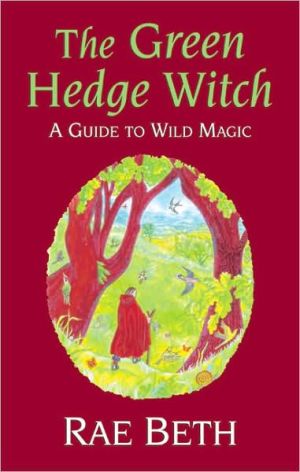

 |

|

The average rating for The Green Hedge Witch: A Guide to Wild Magic based on 2 reviews is 4 stars.
Review # 1 was written on 2012-09-01 00:00:00 Scott W Shorey Scott W ShoreyAncient Middle Eastern religion is an area of interest for me, both because of my own religious background and because the real history is almost always more complicated than the popular account that becomes accepted wisdom, and that applies equally to religious history. Ever since I first heard of Ugarit during my Early Jewish History class and learned about scholars' belief that Josiah's "discovery" of the book of the law was actually written to help cement his reign, I've wondered about the actual beliefs of the Children of Israel. And יה and the Gods and Goddesses of Canaan goes into that in exhaustive detail. Mostly exhaustive linguistic detail. A huge portion of the book is comparative analysis of words in Semitic languages, of which Hebrew is the only one I know anything about and that not very much. Here's an example:Since Asherah was El's consort, this therefore implies that El's sons were seventy in number. Now Deut. 32.8, which is clearly dependent on this concept, declares, 'When the Most High gave to the nations their inheritance, when he separated the sons of men, he fixed the bounds of the peoples according to the number of the sons of God'. The reading 'sons of God' (bene 'elohim) has the support of the Qumran fragment, 4QDeut, the LXX, Symmachus, Old Latin and the Syro-Hexaplaric manuscript, Cambr. Or. 929. This is clearly the original reading, to be preferred to the MT's 'sons of Israel' (bene yisrd'el), which must have arisen as a deliberate alteration on the part of a scribe who did not approve of the polytheistic overtones of the phrase 'sons of God.'This is from the section making the case that the Ugaritic god El was conflated with G-d, such that G-d took on El's attributes of being the creator of the world, of dwelling on a mountain--Day analyizes the epithet "Shaddai" as meaning "of the mountain"--and of being old, referring to the title Ancient of Days and from which the common image of G-d as having a long white beard and flowing white hair derives. Apparently El was also associated with bulls, hence the bulls of Jeroboam in 1 Kings 12:28, the Golden Calf (as a polemic against associations of G-d with bulls), and more linguistics:abîr ya'aqōb, 'the Mighty one of Jacob' (Gen. 49.24). However, the word 'abîr is very similar to 'abbîrIf your eyes glaze over at all these comparisons, this is not the book for you. I was most interested in the analysis of resurrection imagery. Day connects this ultimately to Baal, who descended into the underworld, fought the god of death Mot, was saved by his sister-wife Anat, and returned to life. In Hosea and Isaiah, this story was stripped of all its previous mythological content and the resurrection was used entirely as a metaphor for Israel returning from exile. Then in Daniel, this mythological meaning was re-added to speak of a general resurrection of the dead at the end of time. Day also deals with the idea that the Jews picked up these concepts while in Persia by noting that sleep and death were often correlated in ancient Jewish thought, but not in Zoroastrian sources, indicating a different source. Here the contest between Elijah and the prophets of Baal is also framed as a rejection of G-d's association with Baal. Baal was a storm and fertility god, and Day connects the fire that came from heaven with lightning, indicating G-d's superiority in what was supposed to be Baal's domain. There's a lot of other aspects here, such as the chaoskampf of Baal vs. Yam and the way it's reflected in G-d taming the Leviathan; Asherah and the way that later Jewish writers forgot that Asherah was ever a goddess and referred only to her cultic objects, the oft-mentioned "Asherah poles;" the way that syncretism occurred in diasporic communities like Elephantine in Egypt with names like Anat-Yahu (based on Anat, wife of Baal); and so on. I thought it was really interesting, but it still took me a week to read it because my eyes would often glaze over when Day did another deep dive into single-letter correspondences between Ugaritic, Hebrew, Aramaic, Babylonian, and so on. It's definitely not a book for the casual reader, and while there's a lot of good information here, I don't have the expertise to judge any of its merits or not. |
Review # 2 was written on 2012-02-12 00:00:00 Charles Boyle Charles BoyleI read this book to get more background on the Canaanite gods which appear in the Old Testament: El, Baal, Asherah, Ashtoreth, Dagon, Molech etc. The book is exhaustively researched, and has a lot of interesting information on these gods, derived primarily from the finds at Ugarit. Day's conclusions on the exact nature of the Asherim cult object were especially interesting; it made me wonder whether the Asherim survived in later Judaism in subliminal forms like the Menorah and the Tree of Life (in Kabbalah). Other intriguing topics were Biblical references to the Canaanite pantheon on Mt. Zaphon, and to the chaoskampf battle between Baal and the chaos monster Yam, which became a battle between Yahweh and Leviathan in the Bible. Although certainly worth reading, this probably isn't the best book for the general reader. It is extremely scholarly, and spends a lot of time on close linguistic analysis of Semitic word forms. Day also examines all competing hypotheses on each question, and this ends up being tedious because most of the hypotheses are rejected. Nevertheless, I got what I wanted from this book: a much clearer understanding of the "other" gods in the Bible. |
CAN'T FIND WHAT YOU'RE LOOKING FOR? CLICK HERE!!!